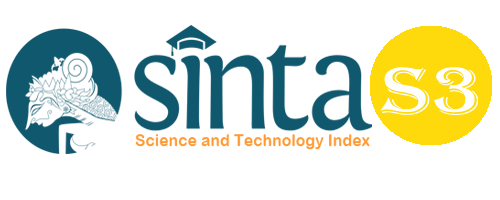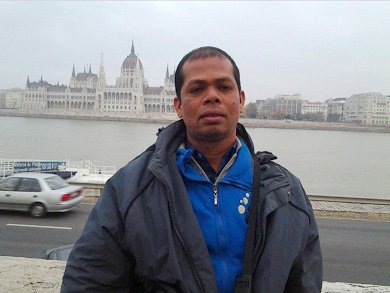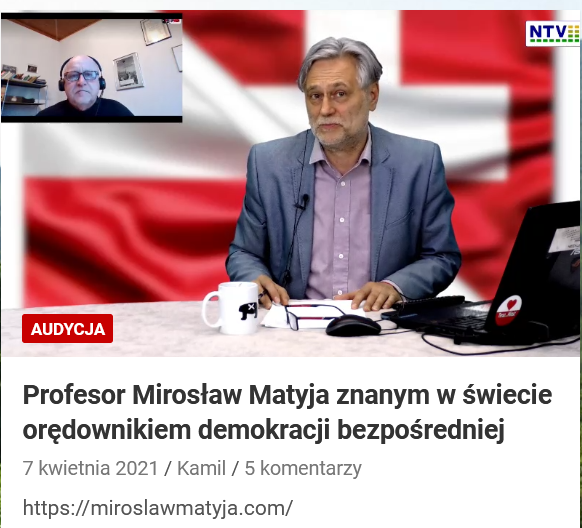HU-Model Effectiveness in Corruption Detection
Abstract
This study aims to test the effectiveness of the HU-Model used in corruption detection efforts. The increasing number of corruption cases shows that the tools to detect corruption are not yet available. With the mode of corruption that is increasingly developing and complex, the existence of a corruption detection tool is a must. The focus of this research is on the causes of fraud star corruption which shows that the cause is due to abuse of power or the authority being exercised is not by the mandate. The characteristics of corruption in Indonesia are very complex, involving various elements from the government / private sector, State / Regional Owned Enterprises (BUMN / D) as well as public officials from the center to the regions. This article discusses the corruption detection model as one of the contributions to fight corruption in Indonesia. As one of the efforts to make Indonesia free from corruption outbreaks, the HU model consists of the variable lack of integrity (lack of integrity), opportunity (opportunity), pressure (pressure), rationalization (rationalization), and the ability (capability) to provide hope and answers. The HU-Model proves that despite the amount of pressure, the number of opportunities, the ease of justification, and the high position and authority will not encourage acts of corruption if there is still strong integrity. The results show that the indications of corruption are divided into three clusters, namely those with indications of corruption (red), gray (gray), and no indications of corruption (green).
Keywords
Full Text:
PDFReferences
Alatas, Syed Hussein. 1987, Corruption, Nature, Causes and Functions, Jakarta, LP3ES
Barata, Kimberly, Piers Cain, Anne Thurston, 1999. From Accounting to accountability, Managing Accounting Records as a Strategic Resource, International Records Management Trust, World Bank infoDEV Program
Belkaoui, Ahmed, 1993. Accounting Theory, Hoarcourt Brace, Jovanovich, New York.
Ben Olken / Abhijit Banerjee (2007) Harvard Univ, MIT, & J-Poverty, 2007, “The social cost of corruption”.
Campos, Edgardo and Pradhan, Sanjay (1999), “The impact of corruption on investment: predictability matters”.
Carlin, Tyrone M. 2001. Performance and Transparency, Are Australia's Leading Edge System Really Working?
Cressey, DR (1964). Delinquency, Crime And Differential Association.
Eliot, Kimberly Ann, 1997. Corruption and the Global Economy, Washington, DC, Institute for International Economics.
Eigen, 2001, Global Corruption Report, echoes a clarion call for a worldwide coalition that will tolerate no safe haven for corruption and money laundering, Transparency International, Washington DC.
Floridi, Luciano, 2004. Open Problems in the Philosophy of Information, Metaphilosophy LLC and Blackwell Publishing Ltd, Vol. 35, No. 4, July 2004
Kaufmann, Daniel, Aart Kraay, and Pablo Zoido-Lobaton (1999), "Governance Matters," World Bank Policy Research Working Paper No. 2196.
Klitgaard, Robert, 1988. Controlling Corruption, Oxford, England, University of California Press.
Langseth, Petter, 1999. Prevention, An Effective Tool to Reduce Corruption, Vienna
Law of the Republic of Indonesia Number 31 of 1999 as amended by Law Number 20 of 2001 concerning Eradication of Criminal Acts of Corruption.
Law of the Republic of Indonesia Number 30 of 2002 concerning the Corruption Eradication Commission.
Magdalena, S., Suhatman, R. (2020). The Effect of Government Expenditures, Domestic Invesment, Foreign Invesment to the Economic Growth of Primary Sector in Central Kalimantan. Budapest International Research and Critics Institute-Journal (BIRCI-Journal). Volume 3, No 3, Page: 1692-1703.
Marshal, Ian E. 2001, Survey of Corruption Issues in The Mining and Mineral Sector, Mining, Mineral and Sustainable Development Project, London.
Moses GD 1987. Income Smoothing and Incentives, Empirical Test Using Accounting Changes, Accounting Review, April: 358-377.
Moeler, Robert and Herbert N. Witt, 1999. Internal Auditing, 5th ed. New York, John Willey & Son, Inc.
Moeler, Robert N. 2004. Sarbanes Oxley and the New Internal Auditing Rules, Canada, John Wiley and Son.
Mauro, Paolo (1995), “Corruption and Growth”, The Quarterly Journal of Economics, August 1995.
Mulford, Charles W. and Eugene E. Comiskey, 2002. The Financial Numbers Game, New York, NY, John Willey and Son inc.
Niati, D. R., Siregar, Z. M. E., & Prayoga, Y. (2021). The Effect of Training on Work Performance and Career Development: The Role of Motivation as Intervening Variable. Budapest International Research and Critics Institute (BIRCI-Journal): Humanities and Social Sciences, 4(2), 2385–2393. https://doi.org/10.33258/birci.v4i2.1940
Partnership for Governance Reform in Indonesia, February 2002. National Survey on Corruption in Indonesia-Final Report.
Pavarala, Vinod, 1996. Interpreting Corruption Elite Perspstives in India, London, Sage Publication.
Pope, J. 2000. TI Source Book 2000 Confronting Corruption, The Elements of a National Integrity System. Germany: Transparency International.
Reinikka, Ritva and Jacob Svenson, 2003, Survey Techniques to Measure and Explain Corruption, World Bank Policy Research, Washington DC.
Romney, Marshall B.. and Paul John Steinbart, 2003. Accounting Information System, 9th ed, PrenticeHall Sanfrancisco, California , Joset-Bas Inc, Publisher.
Saleh, Sirajuddin H, Aslam Iqbal, 1995., Accountability, The Endless Prophecy'. The Asian and Oceanic Development Center.
Shah, M. M., et al. (2020). The Development Impact of PT. Medco E & P Malaka on Economic Aspects in East Aceh Regency. Budapest International Research and Critics Institute-Journal (BIRCI-Journal). Volume 3, No 1, Page: 276-286
Tanzi, Vito. 1998. Corruption Around the World. IMF Staff Papers. Washington, DC International Monetary Fund.
Tradeway, James C. Jr et al, 1987. Report of The national Commission on fraudulent Financial Reporting, National Commission on Fraudulent Financial Reporting
Transparency International (2008), Transparency International 2008 Corruption Perceptions Index – Immediate Release.
Umar, Haryono and Purba Rahima Br (2020), HU Model: Incorporation of Fraud Star in Detection of Corruption,SSRG International Journal of Economics and Management Studies ( IJEMS )
Umar, Haryono; Apriani, Ulfah, Purba, Rahima Br (2021) The Roles of the Government Internal Control System to Minimize Corruption Through the Fraud Star, International Journal of Financial Research
Umar, Haryono and Purba, Rahima, 2019 Forensic Audit Against Corruption, Trisakti University Publisher.
Umar, Haryono, 2020, Detecting Corruption, HU-Model, Trisakti University Publisher.
Umar, Haryono and Purba, Rahima, 2020, HU Model: Incorporation of Fraud Star in Detection of Corruption, SSRG International Journal of Economics and Management Studies ( IJEMS )
Wei, Shang-Jin; Smarzynska, Beata (2000), Corruption and the Composition of Foreign Direct Investment: firm-level evidence, World Bank Working Paper No. 2360.
Yusof, MK, Khair, A., & Simon, J. (2013). Fraudulent Financial Reporting: An Application of Fraud Models to Malaysian Public Listed Companies. A Multidisciplinary Journal of Global Macro Trends, 2(4), 144–160. https://doi.org/10.1353/jda.2014.0042
Zeune, Gary D, 1994, The CEO's Complete Guide to Committing Fraude, Columbus, Ohio, Lori Pingel and Association.
DOI: https://doi.org/10.33258/birci.v4i4.3102
Article Metrics
Abstract view : 208 timesPDF - 82 times
Refbacks
- There are currently no refbacks.

This work is licensed under a Creative Commons Attribution-ShareAlike 4.0 International License.

This work is licensed under a Creative Commons Attribution-ShareAlike 4.0 International License.

_.gif)

















_.gif)



